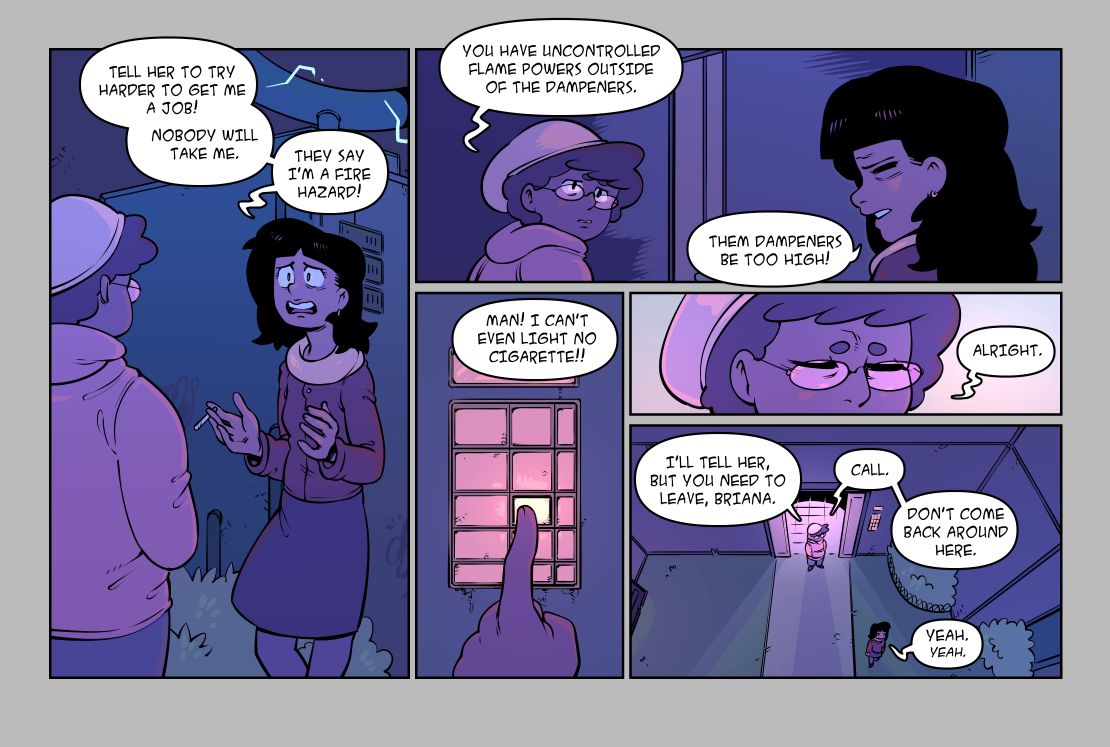Power dampening has been a technological goal since advanced humans first came onto the scene in the mid 80s. In the 90s there were dreams of building a nationwide network that would safely depower everyone. Strides towards actual implementation of power dampening systems have only been achieved in the past 20 years. More developments and innovation came about as a result of reverse-engineering efforts after the Salaarnien Incursion, though most of these advances have yet to reach the public due to lack of approval.
Dampening is an inexact science. Application of power dampening is fairly buggy and isn't uniform. One person can be unaffected while another person can be so affected it interferes or even impairs someone's ability to live their day to day life. For the most part, with proper infrastructure in place, dampening can be expected to moderately suppress the powers of anyone in the immediate vicinity.
Distribution of such infrastructure is divided primarily along socioeconomic lines. A poorer neighborhood is more likely to have a system in place due to a misguided belief that one would serve as a deterrent against superpowered crime. NIMBYism and concern for safety has largely kept dampeners out of more affluent areas.
The inexactness of power dampening has other potential issues as well, such as the impact that a more large-scale installation could have on superheroic activity. The idea that a hero's effectiveness could be limited or completely eliminated has been considered a not unreasonable fear.
Currently, the dampening network is a clumsy patchwork that affects some regions more than others and may even be more of a burden than a boon.
